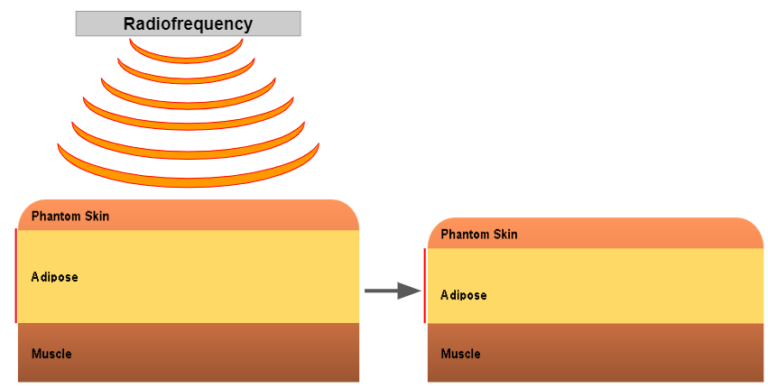Theory
Explanation
How Does Thermal Body Contouring Work?

To understand the principle of radio frequency in reducing fat, we must first understand the composition of fat and the cause of obesity. Adipose tissue or adipose tissue is composed of fat cells (adipocytes) containing cytosolic triglycerides. When their triglyceride concentration increases, fat cells will swell rapidly, leading to excess fat tissue, which may lead to health risks and aesthetically unsightly. Eliminating unwanted fat tissue in a non-invasive manner (including equipment using high-intensity focused ultrasound, low-level laser or radio frequency) is one of the best options.
Secondly, radio frequency technology is how radio frequency technology will reduce fat tissue. This part is mainly divided into two steps.
The first step is to use radio frequency technology to induce fat cells to undergo programmed death. In our design, we plan to use radio frequency (RF) technology to reduce unnecessary fat tissue. The specific principle is that during the operation of the RF device, a rapid alternating micro current can be generated between the cells to reduce the thickness of the fat. This current increases molecular collisions, thereby generating enough heat to induce apoptosis or programmed cell death. At the same time, the use of strictly controlled frequencies can ensure that there is no significant impact and damage to the surrounding structures such as skin and muscles. The second step is to expel the apoptotic fat tissue and its lipids. When apoptosis occurs, it will cause cell membrane degeneration and release contained lipids and other substances. These materials are considered human waste and will be cleaned out of the body during the metabolism.
By controlling the frequency of radio frequency signals, fat cells in various parts of the body can be induced to undergo apoptosis. And for fats in different parts of the human body, different RF frequencies will help improve the controllability of the apoptosis process and ensure the safety of non-invasive treatment.
Reference
Boisnic, S., Divaris, M., Nelson, A. A., Gharavi, N. M., & Lask, G. P. (2014). A clinical and biological evaluation of a novel, noninvasive radiofrequency device for the long-term reduction of adipose tissue. Lasers in Surgery and Medicine,46(2), 94-103. doi:10.1002/lsm.22223
“News.” BodSquad, 9 May 2019, www.bodsquad.uci.design/news/.
Choi, S., Kim, Y., Kim, S., Lee, W., Chang, S., Lee, M., . . . Won, C. (2018). Improvement in abdominal and flank contouring by a novel adipocyte-selective non-contact radiofrequency device. Lasers in Surgery and Medicine,50(7), 738-744. doi:10.1002/lsm.22808 explanation